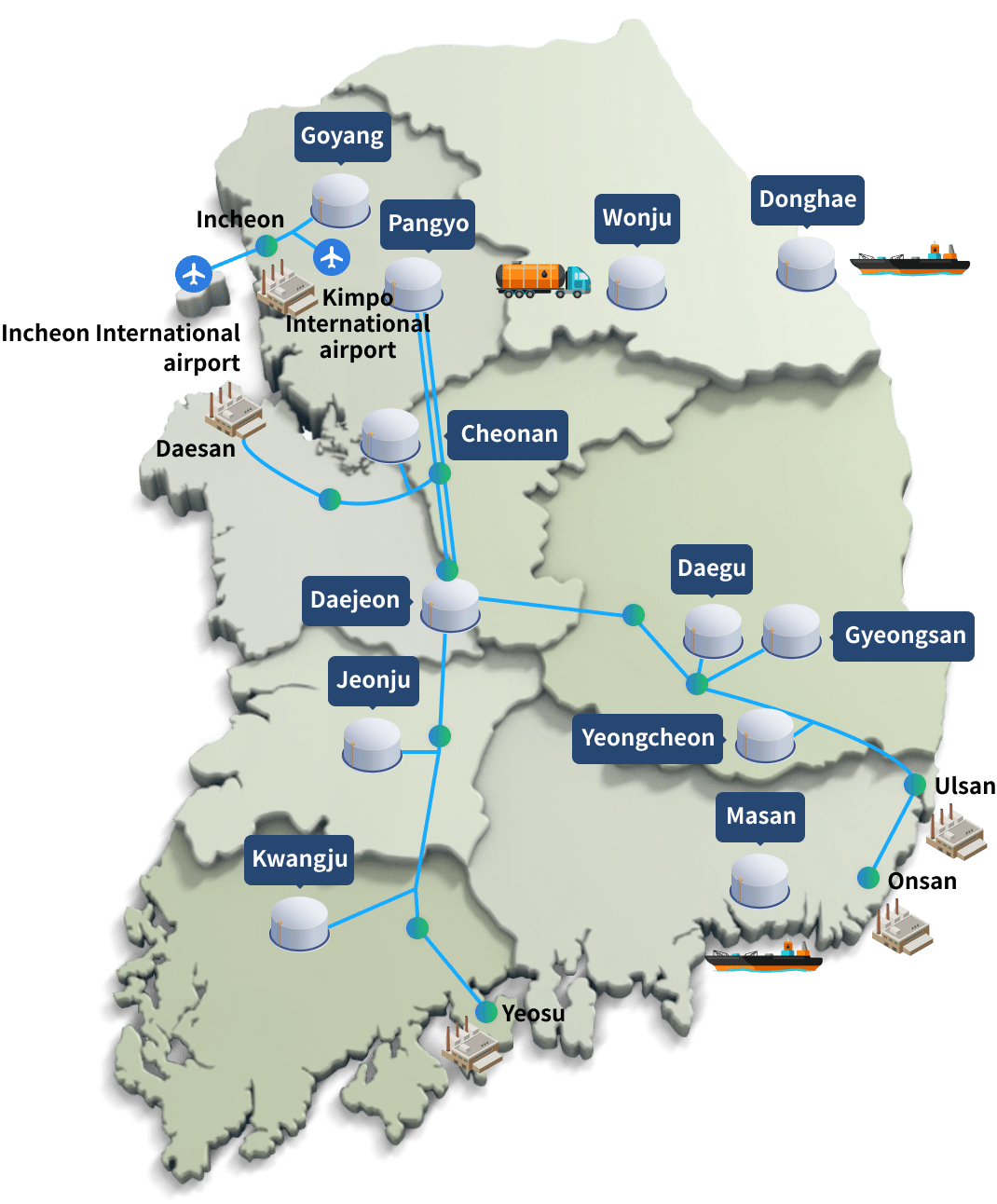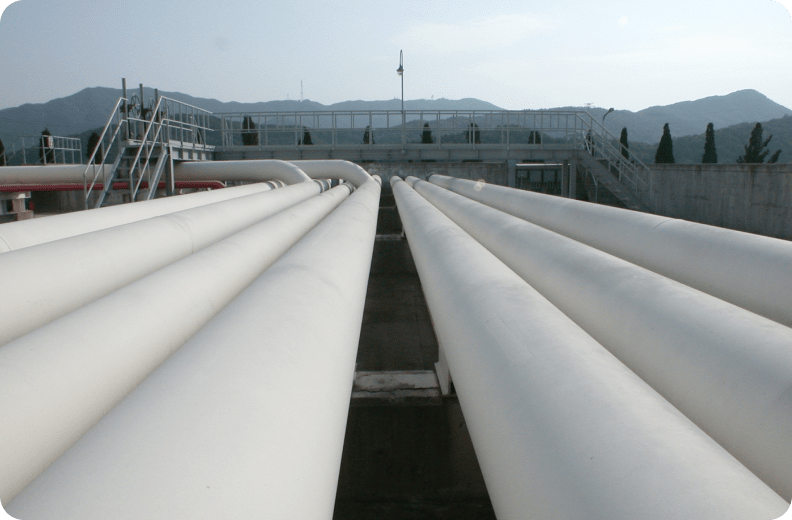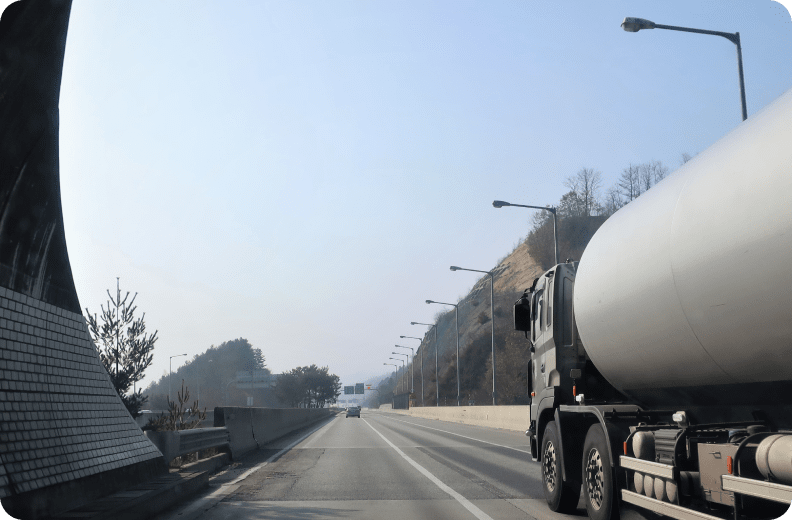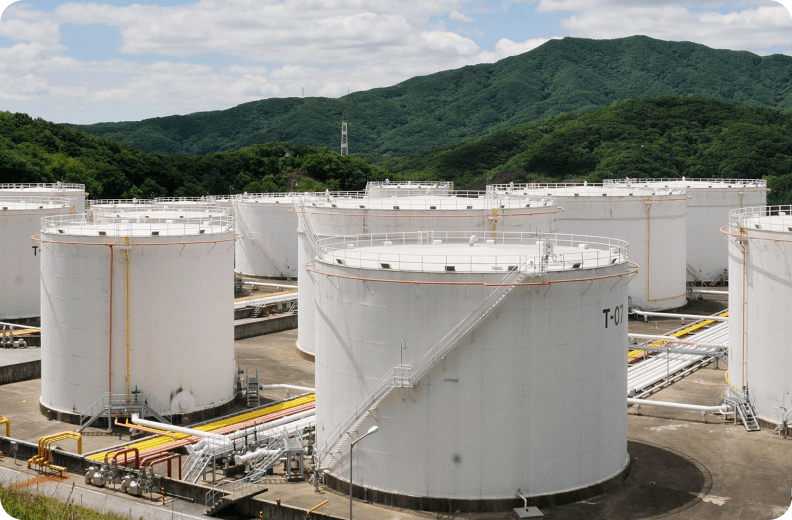Business
Oil Transfer/Storage
Network
Network


DOPCO specializes in operating petroleum pipelines, which transports approximately 58% of the domestic light oil consumption (including gasoline, kerosene, diesel, and aviation fuel) through its extensive 1,116km-pipeline network.
Underground oil pipelines are stable
and economical means of transporting
energy, which are not affected by
weather, time, and traffic conditions.
Storage terminals are located in 12 key
areas across the country and are
capable of storing total of 5.2 million
barrels of refined products.

Deal with 6 petroleum types.
Light oil : gasoline, diesel, kerosene, aviation fuel
Heavy oil : bunker A, and bunker C
Heavy oil : bunker A, and bunker C
Oil Pipelines - Total length
1,116Km
Deal with 6 petroleum types.
Light oil : gasoline, diesel, kerosene, aviation fuel
Heavy oil : bunker A, and bunker C
Heavy oil : bunker A, and bunker C

Domestic light oil consumption
58%

Storage capacity of Oil
(12 Storage)
Total of 5.2million barrels
Oil transportation system
The domestic oil transportation system is divided into two stages. The first transportation stage is
transportation from oil refineries to storage terminals across the country. The second transportation
stage is from the storage terminals to the point of demand (gas stations, dealers, etc.).
DOPCO pipeline is corresponded to first stage of transportation

Social contribution of oil pipelines
Reduce traffic overhaul and port burden
By reducing traffic congestions by 3%,
there is an effect of reducing social overhead
investment costs and easing the burden on
the port by transporting 70% of the unloaded
volume at Incheon Port through oil pipelines.
Reduction the petroleum logistics cost
By replacing more than 58% of the nation's
petroleum product transportation with
pipelines, there is an annual direct logistics
cost savings of KRW 45 billion and indirect
logistics costs of KRW 32 billion.
Petroleum stockpiling effect
The terminal and pipeline capacity is
approximately 6.35 million barrels, creating
a stockpiling effect equivalent to 8 days of
Korea's light oil consumption.
Environment and safety
By resolving the risk of oil supply and demand
caused by traffic congestions and reducing
pollutants such as road damage, noise, air
pollution, and marine pollution, an annual
carbon dioxide reduction of 93,000 tons is
achieved, which is equivalent to planting
33,480,000 trees.
Development Balance of local economy
There are various ripple effects, such as
maximizing land use efficiency by burying
oil pipelines underground and using the
surface as roads or farmland, establishing
an oil supply system in case of emergency,
and balanced regional economic development
by smoothing oil supply and demand in major cities.